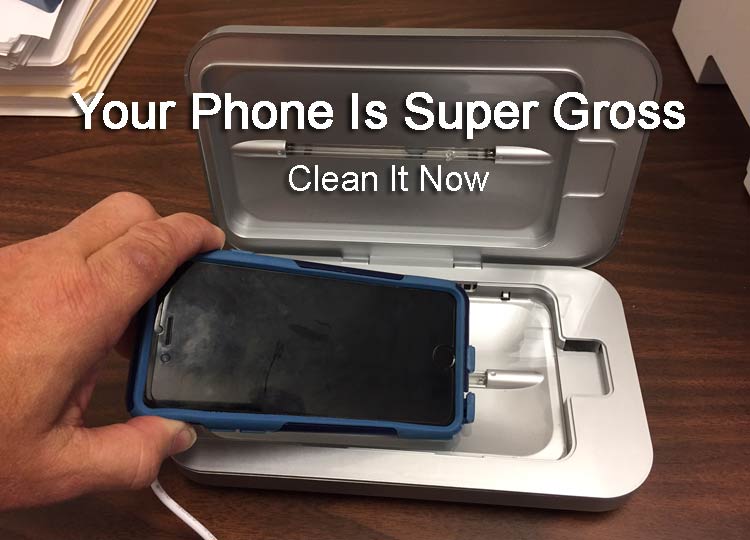This is the most current article that I wrote for Justcoding.com. It is also free to access on their website. However, I suggest becoming a full-subscription member, as they have a huge amount of resources and information available. 
********************************************************************************************************
Zika Virus – A Q&A Primer
by Lori-Lynne A. Webb, CPC, CCS-P, CCP, CHDA, COBGC, CDIP
What is Zika?
According to the Center for Disease Control (CDC) this is the officialdefinition:
The Zika virus is a mosquito-transmitted infection related to dengue, yellow fever and West Nile virus. It was discovered in the Zika forest in Uganda in 1947 and is common in Africa and Asia. It did not begin spreading widely in the Western Hemisphere until last May, when an outbreak occurred in Brazil.
A bit of clinical background
This is information direct from the American Congress of Obstetricians and Gynecologists (ACOG) and the Society of Maternal and Fetal Medicine (SMFM)
The virus spreads to humans primarily through infected Aedes aegyti mosquitoes. Once a person is infected, the incubation period for the virus is approximately 3-12 days. Symptoms of the disease are non-specific but may include fever, rash, arthralgias, and conjunctivitis. It appears that only about 1 in 5 infected individuals will exhibit these symptoms and most of these will have mild symptoms. It is not known if pregnant women are at greater risk of infection than non-pregnant individuals.
Zika during pregnancy has been associated with birth defects, specifically significant microcephaly. Transmission of Zika to the fetus has been documented in all trimesters; Zika virus RNA has been detected in fetal tissue from early missed abortions, amniotic fluid, term neonates and the placenta. However, much is not yet known about Zika virus in pregnancy. Uncertainties include the incidence of Zika virus infection among pregnant women in areas of Zika virus transmission, the rate of vertical transmission and the rate with which infected fetuses manifest complications such as microcephaly or demise. The absence of this important information makes management and decision making in the setting of potential Zika virus exposure (i.e. travel to endemic areas) or maternal infection, difficult. Currently, there is no vaccine or treatment for this infection.
The ACOG and SMFM put forth guidelines for testing of pregnant women, and the laboratory tests are being done exclusively though the guidance of the CDC at the level of the local and state health departments. Many states in the US are developing guidelines to help in identifying who has been exposed, and where an outbreak may take place.
Currently the testing being done is a “Zika” serology IgM testing assay. The reports have been being reported out as “likely positive”, “Inconclusive” and “likely negative” . Unfortunately, the labs do not know and gannot guarantee the sensitivity of the IgM assay.
Symptoms of Zika
Below is a listing of all the known symptoms of Zika virus as put forth by the CDC, however, there may be more that are noted as the Zika Virus becomes more studied in all individuals. Zika is still a virus, and not a bacterial infection, and currently there is not vaccine to prevent it, or a specific medication or antibiotic to treat it with.
• About 1 in 5 people infected with Zika virus become ill (i.e., develop Zika).
• The most common symptoms of Zika are fever, rash, joint pain, or conjunctivitis (red eyes). Other common symptoms include muscle pain and headache. The incubation period (the time from exposure to symptoms) for Zika virus disease is not known, but is likely to be a few days to a week.
• The illness is usually mild with symptoms lasting for several days to a week.
• People usually don’t get sick enough to go to the hospital, and they very rarely die of Zika.
• Zika virus usually remains in the blood of an infected person for about a week but it can be found longer in some people.
Risks of Zika in Pregnant Women and in their sexual partners
Normally Zika virus is transmitted through a mosquito bite, however, the Zika virus can be transmitted from a pregnant mother to her unborn fetus during the time of pregnancy and possibly around the time of birth. It has been noted that Zika virus has been noted in all trimesters of pregnant women, and may possibly be transmitted during the birth process. Sexual transmission of the Zika virus can also occur, however there is limited data, but the CDC has stated that if the patient fears they are infected with the Zika virus to reduce the risk of sexual transmission via abstinence and/or usage of condoms.
Women are not the only ones at risk of contracting Zika virus. Men who have traveled to an area of active Zika virus, or who live in these areas may become infected with the Zika virus too. The CDC has not completely determined if the Zika virus can be transmitted sexually, so the recommendation for men is if you are symptomatic or have a confirmed case of Zika virus, condoms or abstinence is still a best practice. However, it remains uncertain if the mirus persisits in semen even if no longer detectible in the blood.
Fetal Evaluation for possible exposure to Zika
Ultrasound exami is the primary recommendation for pregnant mothers who have been exposed to zika virus. The Ultrasound examinations should focus on development of the fetal brain with intracranial calcifications and microcephaly. Micocephay has been the most frequently reported adverse fetal complication in women who have had the virus while pregnant
SMFM is recommending not only blood tests for pregnant women who have been exposed, but also consider performing serial ultrasound, as frequently as every 3-4 weeks. By obtaining the additional ultrasounds, this would be considered ongoing surveillance. Considering the history of Zika virus and complications to the fetus due to this infection is not known. In addition, the time from exposure and infection from Zika to exhibiting full-blown clinical manifestations is unknown.
The CDC, ACOG and SMFM have put out a number of clinical flow algorhythms for usage with patients’ that have been exposed or live in an area where Zika as been prevalent. However, this is so new, that these recommendations may change very quickly.
Case Study and Coding Consideration
Case #1:
An asymptomatic pregnant woman at 19 weeks gestation, presents to her OB office for her regularly scheduled OB prenatal visit. She informs the receptionist of the possibility she has been exposed to Zika. She has a history of travel to Mexico between 16+0 and 16+5-weeks. She has noted mosquito bites over both legs (calf area). The bites do not appear infected, and look as if they are resolving. Patient states they no longer itch, and does not report any other complaints but her ongoing pregnancy related fatigue. The physician performs a comprehensive history, a comprehensive exam, and will have labs drawn for Zika to be sent to the local district health office. In addition, the physician decides to perform a baseline screening ultrasound exam to follow up from the patient’s first trimester ultrasound anatomy exam from 1 month ago.
Coding Consideration:
CPT:
99214-25 E&M –
76816 Ultrasound
36415 Venipuncture/Lab Draw
ICD-10:
O26.812 Pregnancy related exhaustion and fatigue (2ndtrimester)
Z20.828 Contact with and (suspected) exposure to other viral communicable diseases (Zika Virus)
S80.861A Insect bite of rt lower leg initial encounter
S80.862A Insect bite of lt lower leg initial encounter
Z3A.19 19 weeks gestation of pregnancy
Rationale: The E&M visit would be coded, as it is separately identifiable “outside” the normal pregnancy antenatal care. (A Zika virus exposure is not considered “normal obstetric care”) the follow-up ultrasound/baseline ultrasound is coded for comparison to the previously performed 1st trimester ultrasound. The venipuncture is the only thing chargeable, as the blood was drawn, and sent out to the health district for testing. The sequencing of the pregnancy diagnosis is primary based upon the ICD-10 pregnancy guidelines.
ACOG’s Quick Zika Q&A
Q1. True or False. Pregnant women are at greater risk of infection with the Zika virus than nonpregnant women.
A: False – According to a practice advisory from ACOG and SMFM, “It is not known if pregnant women are at greater risk of infection than non-pregnant individuals.”
Q2. Once a person is infected with the Zika virus, what is the approximate incubation period for the virus?
A:. 3 to 12 days – Following infection with the Zika virus, the incubation period is approximately 3 to 12 days
Q3. The Zika virus spreads to humans primarily through infected Aedes aegypti mosquitoes. Which of the following symptoms may be associated with the virus?
Fever
Rash
Arthralgia
Conjunctivitis
All of the above
A. Although symptoms associated with the Zika virus are non-specific, they may include fever, rash, arthralgia, and conjunctivitis. (eg all of the above)
Q4. In which trimester(s) has transmission of Zika been documented?
A. All trimesters — The transmission of the Zika virus has been documented in all trimesters
Wrap up
At this time, there are still a number of unanswered questions in regard to the Zika virus. However, there is no vaccine currently available, so it is recommended that precaution be taken to avoid exposure to mosquito bites from areas where the Zika virus is prevalent. In the United States and worldwide expert epidemiologists are helping to set forth useful clinical guidelines for identifying and managing patients who have been exposed and currently have the Zika virus. At this time, clinical guidelines are calling for blood tests to be run, and screening ultrasound should be performed on pregnant patients to screen for possible fetal anomalies related to fetal brain development in infected female patients.
When coding, carefully review to see if the physician or provider is stating whether the patient truly has the Zika virus as a diagnosis, or if they are only “screening” for the Zika virus in light of an exposure to the virus. (either through mosquito bite, or sexual transmission).
In addition, currently, ICD-10 does not have a specific code to identify Zika virus. Usage of code B33.8 Other specified viral diseases, would be appropriate. However, If the patient is diagnosed with the Zika virus and has fever with it, then it may be appropriate to use code A92.8 – Other specified mosquito-borne viral fevers. If the patient is pregnant, then usage of ICD-10 code 098.5X “other viral diseases complicating pregnancy, childbirth and the puerperium,” (be sure to use the most specific trimester as the additional character) would be the most appropriate.
If in doubt about the clinical documentation, be sure to query the provider to obtain clarity on the diagnosis noted in the medical record.
References:
www.acog.org/
www.cdc.gov/zika
Editor’s note: Lori-Lynne A. Webb, CPC, CCS-P, CCP, CHDA, CDIP, COBGC and ICD10 cm/pcs Ambassador/trainer is an E&M, and Procedure based Coding, Compliance, Data Charge entry and HIPAA Privacy specialist, with over 20 years of experience. Lori-Lynne’s coding specialty is OB/GYN office & Hospitalist Services, Maternal Fetal Medicine, OB/GYN Oncology, Urology, and general surgical coding. She can be reached via e-mail at [email protected] or you can also find current coding information on her blog site: http://lori-lynnescodingcoachblog.blogspot.com/.
Lori-Lynne’s Coding Coach Blog










 Deborah Marsh, JD, MA, CPC, CHONC, is a senior content specialist for TCI SuperCoder, working on everything from online tool enhancements and data updates to social media and blog posts. Deborah joined TCI in 2004 as a member of TCI’s respected Coding Alert editorial team.
Deborah Marsh, JD, MA, CPC, CHONC, is a senior content specialist for TCI SuperCoder, working on everything from online tool enhancements and data updates to social media and blog posts. Deborah joined TCI in 2004 as a member of TCI’s respected Coding Alert editorial team.
 Deborah Marsh, JD, MA, CPC, CHONC, is a senior content specialist for TCI SuperCoder, working on everything from online tool enhancements and data updates to social media and blog posts. Deborah joined TCI in 2004 as a member of TCI’s respected Coding Alert editorial team.
Deborah Marsh, JD, MA, CPC, CHONC, is a senior content specialist for TCI SuperCoder, working on everything from online tool enhancements and data updates to social media and blog posts. Deborah joined TCI in 2004 as a member of TCI’s respected Coding Alert editorial team.

